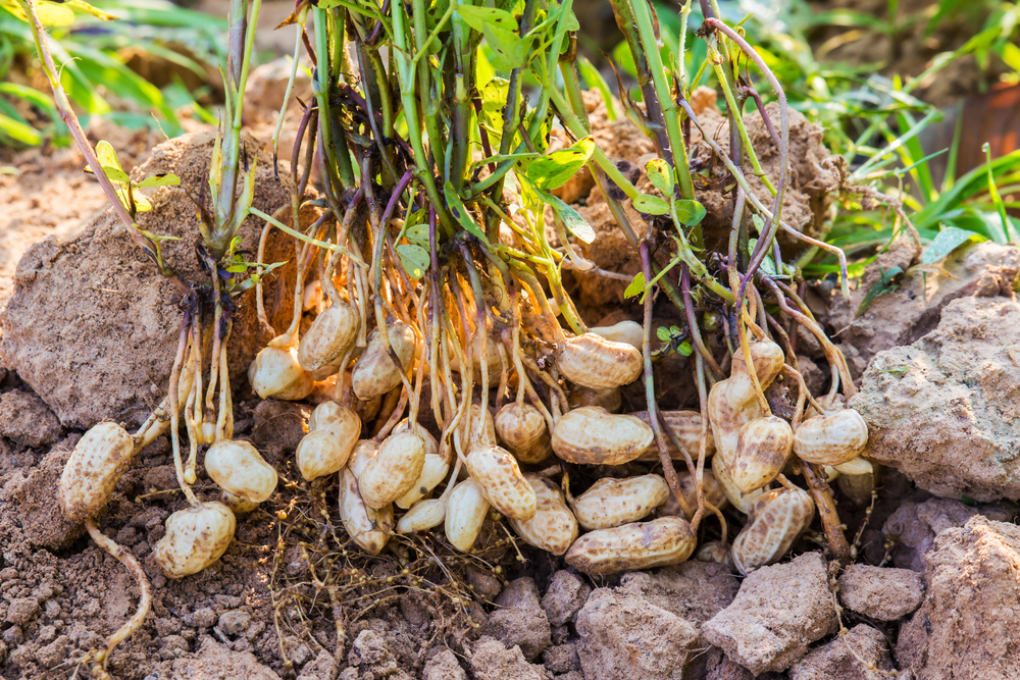Let’s talk about how to make the perfect peanut sauce because let’s be honest, life without it would be like a movie without popcorn – just plain sad. Whether you're whipping up a batch of pad thai, dipping some spring rolls, or simply smearing it on a slice of bread, peanut sauce is the MVP of the kitchen. But here’s the thing – not all peanut sauces are created equal. So, buckle up as we dive deep into the world of creamy, nutty, and downright delicious goodness.
Now, I know what you're thinking. Isn’t peanut sauce just peanuts and water? Well, my friend, that’s where you’re wrong. There’s an art to crafting the ideal sauce, and trust me, it’s worth every bit of effort. From selecting the right type of peanuts to balancing the flavors, we’re going to break it down step by step so you can make something truly unforgettable.
This isn’t just about cooking; this is about creating a sauce that will elevate your meals to new heights. So, whether you're a seasoned chef or a kitchen novice, this guide has got you covered. Let’s get started, shall we?
Read also:Who Is Scott Steiners Wife A Deep Dive Into Her Life Story And Legacy
Flavor Pairings with Peanut Sauce
Read also:Paula Patton Husband 2024 A Deep Dive Into Her Love Life
Alternatives to Traditional Peanut Sauce
The History of Peanut Sauce
Peanut sauce might seem like a modern invention, but its roots go way back. Believe it or not, this tasty condiment has been around for centuries. Originating in Southeast Asia, peanut sauce quickly became a staple in countries like Indonesia and Thailand. It’s believed that traders brought peanuts from Africa to Asia, where they were incorporated into local cuisines.
Over time, peanut sauce evolved, with each culture adding its own unique twist. For instance, Indonesian satay sauce is known for its rich, spicy flavor, while Thai peanut sauce leans more towards sweet and tangy. Today, peanut sauce is a global phenomenon, enjoyed by food lovers all over the world.
So, why has peanut sauce stood the test of time? Well, it’s simple. It’s versatile, flavorful, and downright addictive. Whether you're using it as a dipping sauce, marinade, or dressing, it’s a game-changer in the kitchen.
Choosing the Right Peanuts for Your Sauce
Peanut Varieties
Not all peanuts are created equal, and choosing the right type can make a huge difference in your sauce. Here are some of the most common peanut varieties used in cooking:
- Runner Peanuts: These are the most popular choice for peanut butter and sauces due to their consistent size and flavor.
- Virginia Peanuts: Known for their large size and bold flavor, these peanuts are great for roasting and adding texture to your sauce.
- Valencia Peanuts: With their sweet taste and reddish-brown skin, Valencia peanuts are perfect if you want a sweeter sauce.
- Spanish Peanuts: These small, reddish peanuts have a higher oil content, making them ideal for frying or adding richness to your sauce.
When selecting peanuts for your sauce, consider the flavor profile you’re aiming for. If you want a smooth, creamy texture, go for runner or Valencia peanuts. For a more robust flavor, opt for Virginia or Spanish peanuts.
How to Make Peanut Sauce
Step-by-Step Guide
Making peanut sauce from scratch is easier than you think. Follow these simple steps, and you’ll have a delicious batch ready in no time:
- Toast the Peanuts: Start by toasting your peanuts in a dry skillet over medium heat. This enhances their flavor and adds a nice crunch to your sauce.
- Blend the Peanuts: Once toasted, let the peanuts cool slightly, then blend them in a food processor until you reach your desired consistency.
- Add Liquid: Slowly add water, coconut milk, or soy sauce to the blender while it’s running. This helps thin out the sauce and gives it that silky texture.
- Season to Taste: Add in some garlic, ginger, lime juice, and chili for extra flavor. Adjust the seasoning according to your preference.
- Adjust Thickness: If the sauce is too thick, add more liquid. If it’s too thin, blend in a bit more peanut butter.
And there you have it – a homemade peanut sauce that will blow your mind. Customize it with your favorite spices and herbs to make it truly your own.
Flavor Pairings with Peanut Sauce
What Goes Well with Peanut Sauce?
Peanut sauce is incredibly versatile and pairs well with a variety of dishes. Here are some ideas to get you started:
- Spring Rolls: Fresh or fried, spring rolls are a classic pairing with peanut sauce.
- Pad Thai: This Thai staple is incomplete without a drizzle of creamy peanut sauce.
- Grilled Meats: Use peanut sauce as a marinade or dipping sauce for grilled chicken, beef, or pork.
- Salads: Toss your greens with peanut sauce for a unique and flavorful twist.
- Vegetables: Roasted or steamed veggies like broccoli, carrots, and bell peppers are delicious with a side of peanut sauce.
Don’t be afraid to experiment with different combinations. You might discover a new favorite dish in the process!
Health Benefits of Peanuts
Aside from being delicious, peanuts also pack a nutritional punch. Here are some of the health benefits of incorporating peanuts into your diet:
- Rich in Protein: Peanuts are an excellent source of plant-based protein, making them a great option for vegetarians and vegans.
- Heart-Healthy Fats: They contain monounsaturated and polyunsaturated fats, which can help reduce bad cholesterol levels.
- Packed with Vitamins and Minerals: Peanuts are loaded with essential nutrients like magnesium, vitamin E, and folate.
- Antioxidant Powerhouse: They contain antioxidants like resveratrol, which can help protect your cells from damage.
So, not only is peanut sauce a tasty addition to your meals, but it’s also good for you. Win-win, right?
Tips for Making the Perfect Peanut Sauce
Pro Tips for Success
Here are some insider tips to help you achieve peanut sauce perfection:
- Toast Your Peanuts: This simple step can make a huge difference in the flavor of your sauce.
- Use Fresh Ingredients: Fresh garlic, ginger, and lime juice will give your sauce that extra zing.
- Balance the Flavors: Aim for a balance of sweet, salty, sour, and spicy. This will make your sauce more complex and interesting.
- Adjust Consistency: Experiment with different liquids to achieve the perfect thickness for your sauce.
With these tips in mind, you’ll be well on your way to mastering the art of peanut sauce.
Common Mistakes to Avoid
Don’t Ruin Your Sauce
Even the best cooks make mistakes from time to time. Here are some common pitfalls to watch out for:
- Overcooking the Peanuts: Burning your peanuts will give your sauce a bitter taste, so keep an eye on them while toasting.
- Using Old Ingredients: Stale spices or dried herbs can dull the flavor of your sauce, so use fresh ones whenever possible.
- Ignoring the Balance: Too much salt or sugar can overpower the other flavors, so taste as you go and adjust accordingly.
- Skipping the Toasting Step: While it might seem like an unnecessary step, toasting the peanuts really does make a difference in the final product.
By avoiding these mistakes, you’ll ensure that your peanut sauce is always top-notch.
How to Store Peanut Sauce
Once you’ve made your peanut sauce, you’ll want to store it properly to keep it fresh. Here’s how:
- Refrigerate: Store your sauce in an airtight container in the fridge for up to a week.
- Freeze: If you want to keep it longer, freeze the sauce in portions for up to three months. Just remember to thaw it slowly in the fridge before using.
- Stir Before Using: The sauce may separate over time, so give it a good stir before serving.
With proper storage, you can enjoy your peanut sauce for weeks to come.
Alternatives to Traditional Peanut Sauce
If you’re looking to switch things up, here are some alternatives to traditional peanut sauce:
- Almond Sauce: Made with almond butter, this sauce has a slightly sweeter and nuttier flavor.
- Cashew Sauce: Creamy and mild, cashew sauce is perfect for those who prefer a less intense flavor.
- Sesame Sauce: With its rich, nutty taste, sesame sauce is a great option for those looking for something different.
Experiment with these alternatives to find your new favorite sauce.
Conclusion
So, there you have it – everything you need to know about making the perfect peanut sauce. From its rich history to the art of crafting the ideal consistency, we’ve covered it all. Remember, the key to great peanut sauce lies in using fresh ingredients, balancing the flavors, and storing it properly.
Now that you’ve got the know-how, it’s time to put it into practice. So, head to the kitchen, gather your ingredients, and start creating. And don’t forget to share your creations with friends and family – because good food is always better when shared.
Got any tips or tricks of your own? Leave a comment below and let us know. And while you’re at it, why not check out some of our other articles for more culinary inspiration? Happy cooking!


